Mystery Statue: Agogwe or Orang Pendek?
Posted by: Loren Coleman on March 13th, 2010

Is this mystery statue, which is to be found in the International Cryptozoology Museum, a stylized native art example of a Proto-Pygmy form of an unknown hominoid?
The alleged origin is noted on a small label on its back. It says, “Made in Indonesia.” I obtained the figurine from an American zoological park’s gift shop, during one of my travels. The clerk had no additional information about it, other than what existed on that tiny label.
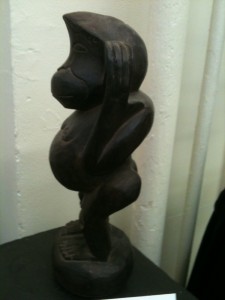
It is an ape. There is no tail.
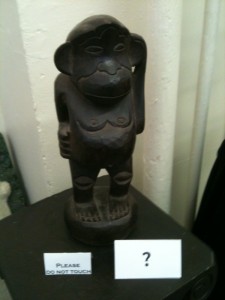

It is not a monkey. It has five toes that seem to be hominid. Furthermore, it is apparently too bipedal to represent the known apes from southern Asia, i.e. the orangutans and the gibbons. The robustness and represented gender may indicate it is a replica of a small hominid that may be a pregnant.
What is it?
At first look, this figurine remarkably resembles one from Africa.
Christian Le Noel told me the statue shown below was from Tanzania and represented an agogwe. However, Jean luc Drevillion then informed me that this was incorrect. Drevillion said it is a statuette of kara-komba, also known as the bush dwarf or toulou, which is the local form of the Proto-Pygmies to be found in the Central African Republic.
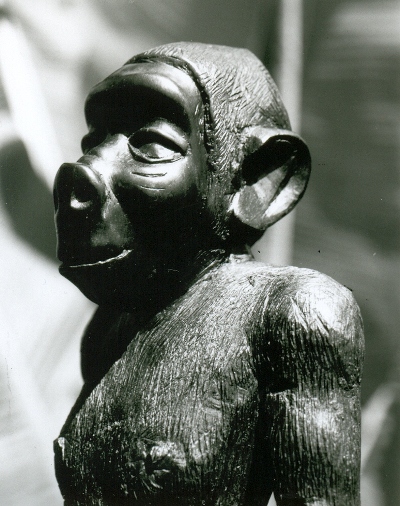
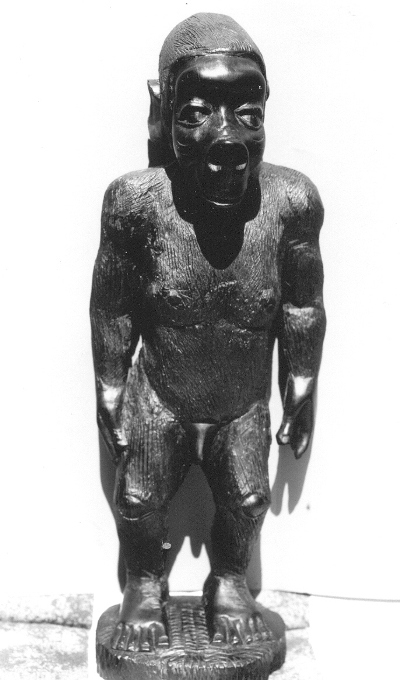

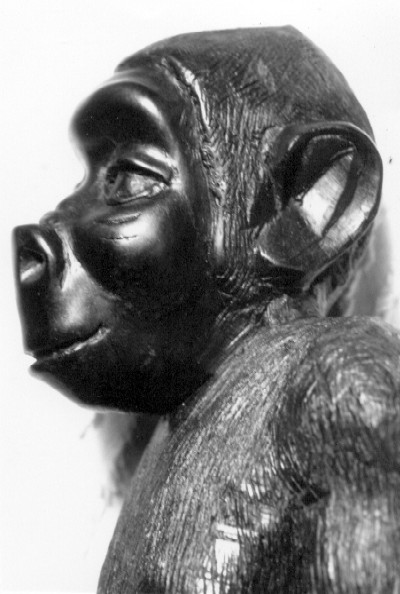
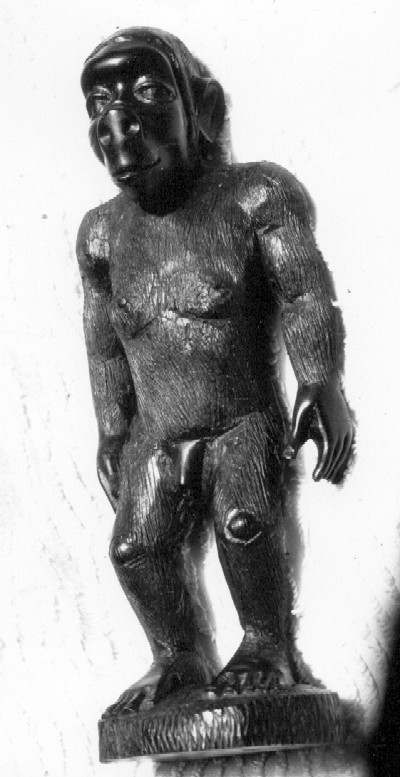
Merci – Christian Le Noel & Philippe Bloch, Loren
Is there a link to this wooden representation of a Proto-Pygmy, the Agogwe from Africa, and the one in the museum?
How does it match some images and replicas of the Australian Yowies?
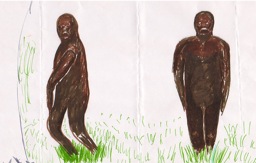
The above is an eyewitness drawing of a Yowie from Australia.
Click on the image above to make the Yowie larger, as seen here on the cover of The Yowie: In Search of Australia’s Bigfoot. Examine those knees.
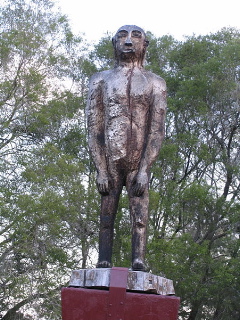
Look at Kilcoy, Australia’s Yowie’s knees.
What if we turn to Indonesia?
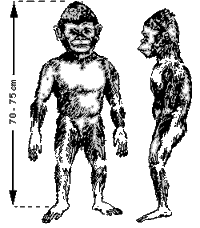
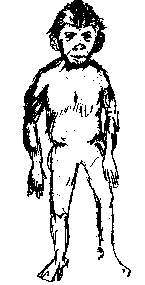
These field drawings of the Orang Pendek are based on Debbie Martyr’s and others’ sightings. They are identikit pictures, drawn by a WWF artist from several independent, but very consistent descriptions of the Sumatran Orang Pendek. They show an upright ape that many of the forest villagers consider a commonplace part of their local natural history. Note the knees, the ears, nose and the general stance, as compared to the ICM’s mystery statue. (Sumatra, of course, is part of Indonesia.)
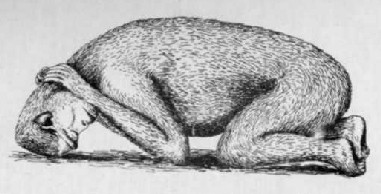
This is the sleeping position of an Almas seen in the Gobi Desert, Mongolia.
Please take a closer look at the mystery statue, the Agogwe one, the Almas, the wooden Kilcoy Yowie, the illustrated Yowies, and the witness-inspired likenesses of the Orang Pendek. They all appear to have calluses on their knees, which have been explained by Russian field researchers as a result of the above reported sleeping position, demonstrated for the Almas.
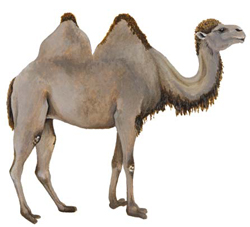
These hairy hominoids’ heavily callused knees are sometimes referred to as “camel knees,” because of their obvious likeness to the knees of camels. The hardening of the skin of the knees in camels is due to the evolutionary fact that the camel’s knees (as shown in the Bactrian above) were adapted for bending down on the sands of its native Gobi desert, to rest and sleep.

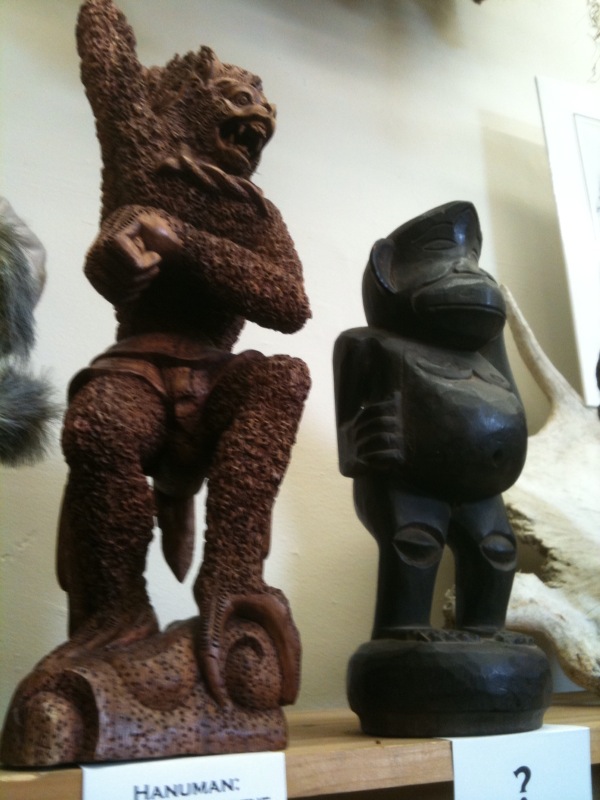
What does the ICM’s mystery statue actually illustrate? Is it from Indonesia?
About Loren Coleman
Loren Coleman is one of the world’s leading cryptozoologists, some say “the” leading living cryptozoologist. Certainly, he is acknowledged as the current living American researcher and writer who has most popularized cryptozoology in the late 20th and early 21st centuries.
Starting his fieldwork and investigations in 1960, after traveling and trekking extensively in pursuit of cryptozoological mysteries, Coleman began writing to share his experiences in 1969. An honorary member of Ivan T. Sanderson’s Society for the Investigation of the Unexplained in the 1970s, Coleman has been bestowed with similar honorary memberships of the North Idaho College Cryptozoology Club in 1983, and in subsequent years, that of the British Columbia Scientific Cryptozoology Club, CryptoSafari International, and other international organizations. He was also a Life Member and Benefactor of the International Society of Cryptozoology (now-defunct).
Loren Coleman’s daily blog, as a member of the Cryptomundo Team, served as an ongoing avenue of communication for the ever-growing body of cryptozoo news from 2005 through 2013. He returned as an infrequent contributor beginning Halloween week of 2015.
Coleman is the founder in 2003, and current director of the International Cryptozoology Museum in Portland, Maine.

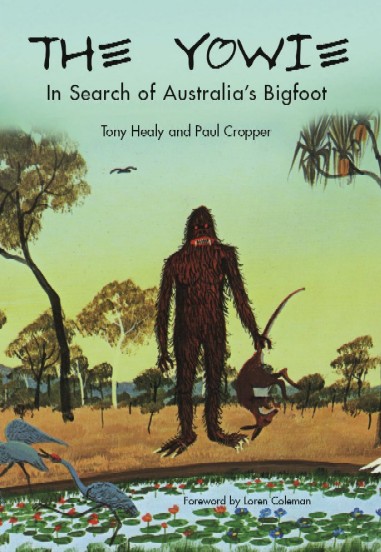









Greetings All!
There is an anthropomorphic monkey in the Ramayana, a Hindu (Sanskrit) epic that can take a week to perform on stages sometimes the size of football fields. Hanuman doesn’t usually look like that though, he usually has full armor on. (He leads his army to aid the hero) And he’s a male. It doesn’t look like the stuff I saw in Indonesia when I was a foreign exchange student there in 1979, but maybe styles have changed. In my opinion, I would say it is simply a piece made to be knocked out fast for the tourist trade at zoological parks in the US!
do we know/idea of age? I’m wondering about this being some tourist trap special made in semi-mass quantities to sell to the tourists as (take your pick of names).
by the way, has anyone theorized or locals have stories for the almas sleeping like that? I can only think of sand storms, but does the Gobi desert have that problem?
Head and especially nose reminds me of the Minnesota iceman illustrations by Heuvelmans and Lindbergh.
Loren, your agogwe-cum-kara-komba-cum-toulou may’ve been subject to a little cultural filtering because it’s a dead-ringer for Fireball XL5’s Lazoon, Zoonie, (though of course it could’ve gone the other way round)!
That thing about the knees you’ve brought up is highly intriguing, (though it set me wondering if Jon Voight’s character Joe Buck in Midnight Cowboy might’ve been an agogwe-cum-almas in a previous life!), but it’s not just the knees that’re similar to a camel’s.
Look at those pointy ears on the almas – I can clearly see versions of those ears on Patterson’s ‘Patty’, and some reports of werewolves I’ve read remind me more of Bigfoot than werewolves, except they make this big deal about pointy wolf-like ears.
As a kid I used to have a friend who could rotate his ears as his party piece but seemed to loose the knack as he got older. Stan Laurel, though, was said to be able to do it into old age, and I wonder if some werewolf type reports might be evidence Bigfoot, etc., have the same ability to draw their ears in or flare them out when listening or as part of their aggression or retreat strategies.
Sleeping in a face-down position, with the neck guarded by the forearms and hands, makes sense as a measure of protection against big cat predation.
Fossilhunter’s take on Hanuman and the whole “anthropomorphic monkey” thing is interesting and could have some merit.
Look ultimately like an “Agogwe” to me. 🙂
Looks like a creative statuette of a monkey.
But I always though that Orang Pendek is way more possible than BF… More curious about those areas =)